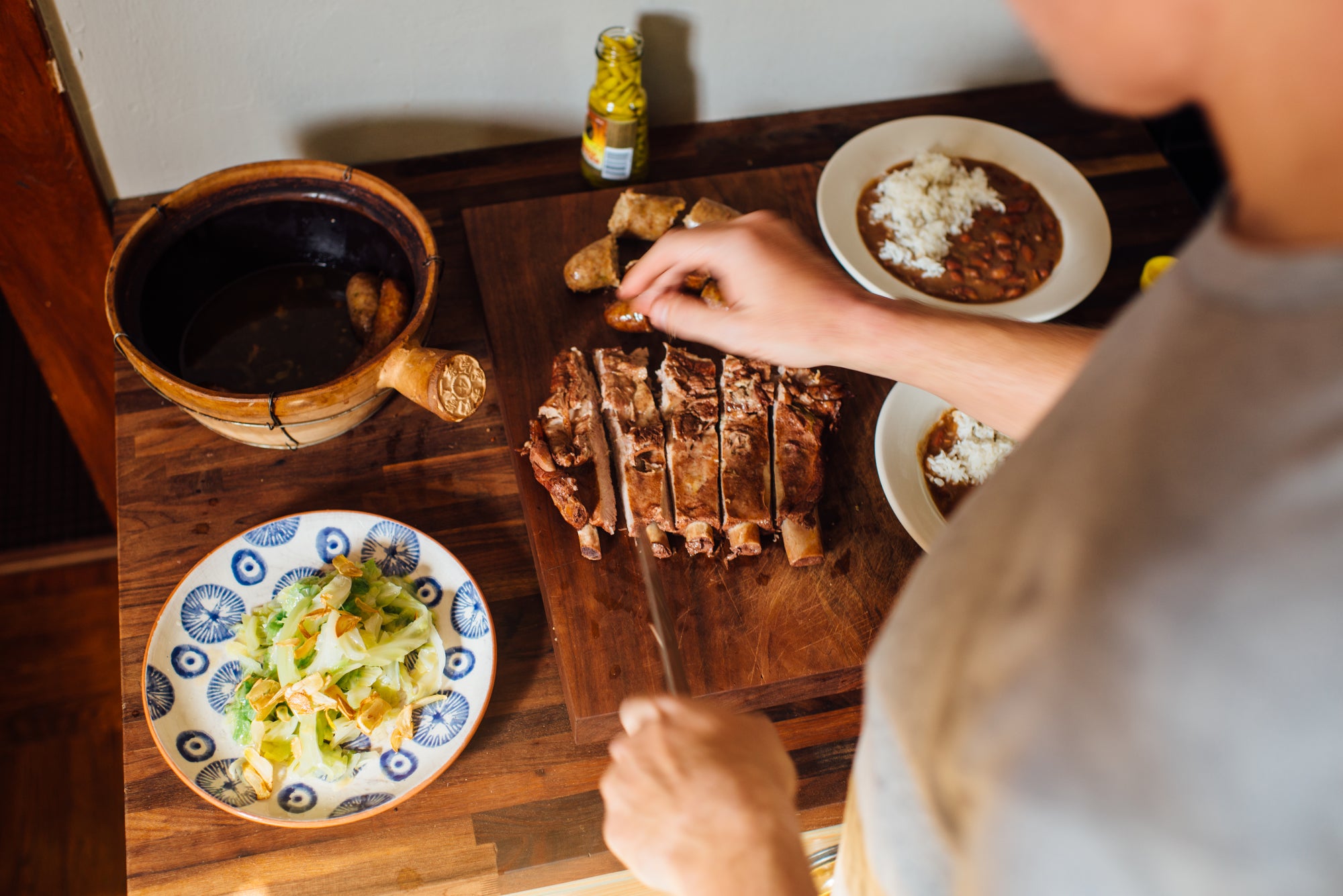There was a time, New Orleans mythology says, when red beans and rice were a Monday-only kind of dish. New Orleans’s homemakers, busy washing clothes all day, the story goes, would throw a pot of red beans on the stove, buttressed with leftover pork from the day before. Come day’s end, the red beans had gone soft, ready to be served with one of Louisiana’s finest crops: rice. Over the decades, red beans and rice became anytime food, especially for celebrations. You see it at birthdays and funerals. You bring it for Mardi Gras, that party to beat all parties.
New Orleans isn’t the only place with a thing for red beans. There’s rajma, a creamy red bean stew from Punjab, and gallopinto, a rice-and-beans dish that’s ubiquitous in Nicaragua. In Spain’s Basque country, it’s alubias con sacramentos.
Last September, my boyfriend and I drove through parts of the Spanish Basque country. We hiked Mount Adarra, passing rows of cows as we crested the summit and looked out over the half-moon-shaped Bay of Biscay and the city of San Sebastián. After our descent, we drank cider and ate plates of boiled meats, tortilla Española and cheesy croquetas at a Basque cider house, called an erretegia. My Basque friend, Gontzal, chaperoned us from bar to bar, eating the local version of tapas called pintxos. Gontzal even cooked for us—fresh anchovies, an omelet with salt cod, and sautéed guindillas (mild green peppers).
It was only when we returned home to New Orleans and I started digging into Alexandra Raij’s The Basque Book that I realized all the foods Brandon and I missed while we were in Spain: marmitako (fisherman’s stew), lamb meatballs with fresh peas, the Basque version of ratatouille called pisto. That’s always how it is with travel. You don’t realize what you didn’t know until you know it.

While paging through the book, I noticed remarkable similarities between Raij’s recipe for Basque red beans and the ubiquitous red beans of my adopted home. New Orleans–style red beans are a Creole dish. Basque red beans, with their allotment of two kinds of sausage, a glut of other pork products, and the obligatory reliance on a vinegary, chile-hot condiment, were already singing in the key of Cajun. I wondered if I could prepare these beans the Basque way, with the addition of some porky Louisiana soul.
I had freezer stock from two of Cajun country’s best butchers: smoked pork sausage from Chop’s Specialty Meats, and boudin, that Cajun pork-and-rice sausage staple, from Billy’s Boudin & Cracklins. I used those in place of the recipe’s chorizo and blood sausage. I added ribs and tasso (southern Louisiana spiced smoked pork) in place of jamón Serrano.
I didn’t have washing to do the day I made the beans. I did get distracted, though, and let them cook longer than I intended. Some of them turned pulpy. This means the beans’ texture was a lot like Popeye’s red beans. This is not a problem, because Popeye’s red beans are mighty good.
There’s no point in making a small amount of red beans and rice. I gave some to our neighbors across the street, as you do down this way, and my boyfriend and I still had red beans for days. Turns out every day is a good day when every day feels like a New Orleans Monday.

